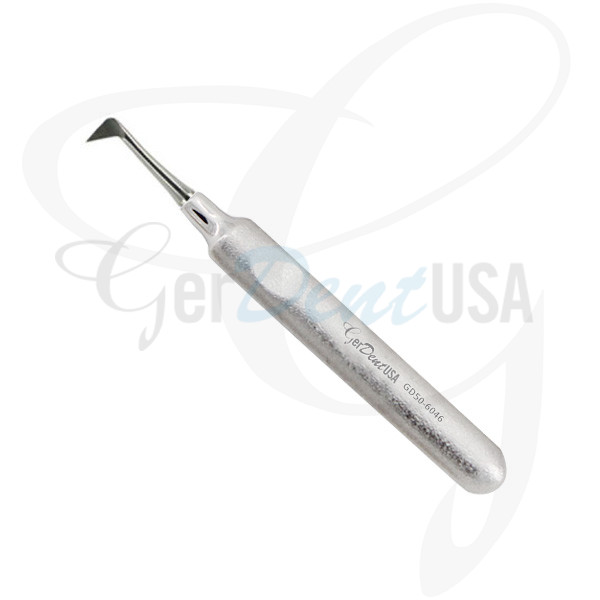click to see the large image

Elevator, Seldin, 4R
Seldin Elevator 4R is a right-angled dental instrument used to effectively loosen molar teeth and root fragments on the right side of the mouth. Designed for precise luxation, it features a tapered, angled tip and ergonomic handle for improved control during extractions.
All instruments are for Human Dental use only, if looking for Veterinary Instruments, please visit GerVetUSA.com, for Human Surgical Instruments please visit GerMedUSA.com.
Description
Reviews
Guides
FAQS
Videos
The Elevator, Seldin, 4R is a single-ended dental surgical tool specifically engineered for tooth extractions, particularly in the right posterior quadrant. It features a sharp, broad-to-narrow angled tip that enables precise entry into the periodontal ligament space, allowing controlled luxation of teeth or roots. Commonly used for molar extractions and impacted third molars, its smaller design than the 1R offers greater access in tight spaces. The angulated shank ensures optimal working angles, while the sturdy handle provides a secure grip and leverage. Crafted from premium German stainless steel, it is durable, corrosion-resistant, and sterilizable for repeated clinical use.
Applications
Used for loosening teeth and roots, especially upper and lower molars on the right side, and elevating the periosteum or root fragments before forceps extraction.
Anatomical Features
The 4R elevator consists of a single sharp, angled blade designed to fit around molar roots, an angled shank for access to posterior teeth, and a robust, ergonomically shaped handle for optimal grip and leverage.
Key Features
- Right-angled blade for precise luxation on the right side
- Broad-to-narrow sharp tip for secure ligament entry
- Compact blade design is ideal for posterior access
- Ergonomic handle enhances comfort and control
- Crafted from German surgical stainless steel
- Reusable and fully autoclavable for long-term use
Reliable and efficient, the Seldin Elevator 4R is a vital tool for controlled and safe extractions, especially in molar regions on the right side.

